―Dr. Joanna Frantz, PT, MSPT, DPT
Hi, I’m Joanna.
I’m the physiotherapist for the US Para-Equestrian Team, a Human Sport Science and Medicine Practitioner at USEF, and I own a private practice called FYZICAL in Jacksonville, Florida. I also created Refine Your Ride, a clinic program where I assess riders to identify their physiological riding weaknesses and imbalances.
As riders, we’ve all tried different exercises over the years. There are so many, so how do you choose? You can spend time searching the internet and then you have to decide what equipment, bands, weights, straps, etc. you need. There are so many choices, it can be daunting to figure out where to start and what exercises are best for you. Let me take away your confusion by showing you where to start and how to keep it simple.
I’ll begin by sharing articles and videos that will, I hope, help with your physical health and in turn improve your riding. These are just a start, so please reach out for more information. I would be happy to help you find a routine that is specific to your needs and your riding success!
The Importance of Symmetry
For each sport, activity, or exercise, it’s important to understand what the goal is and how stretching can help you attain that goal. Here, our goal is horseback riding and being the best rider for our horse that we can be! In riding, symmetry is key. You can imagine that a horse can feel the simple touch of a fly so he can definitely feel the slightest change in your seat, your legs, or your hands. Also, consider that your horse really doesn’t want to fall down! So, if you are constantly sitting to one side, more forward, or more behind, he’s going to notice and want to maintain his balance even if it’s not correct.
Stretching and Symmetry
When it comes to stretching for riders, I focus on symmetry. If one hip is tighter than the other, you will sit unbalanced on the horse. Let’s look at one example as I discuss a particular muscle group important for not only strength but also flexibility: your hip rotators. There are several muscle groups in this category, so I’m going to be general. For each rider that I evaluate, I further determine which muscle may be the issue.
Let’s imagine you are sitting in the saddle with your feet comfortably in the stirrups. Look down. Does one foot turn out more than the other? If so, one reason for this could be tight hip rotators, meaning you’re unable to turn your leg inward at the hip so that your foot points forward. How do we fix this? At first, you compensate in a variety of ways: you may turn your ankle in, shift your weight off-center, or bend your knee more, etc. But, long term, this will lead to incorrect riding and both you and your horse being unbalanced.
Stretching is one way to address an imbalance. You can do both static and dynamic stretching. Each has its own benefits. For static stretching, hold each position for at least 30 seconds. Sometimes I even like to hold for 2 minutes in each position. For rolling and dynamic stretching, go with sets of 10, 15, or 30 seconds.
Let Me Demonstrate
In this video, I demonstrate some passive stretches that I find helpful for riders. These are more like static stretches, some have some movement. Static stretches are great for a slow warm-up if you are still recovering from an injury or for a gentle cool down after riding. They’re also great if you’ve been stuck in a truck for a few hours trailering horses and find yourself a little stiff at the end of your journey!
- Hamstring Stretch with Glide: Lie on your back and hold your knee still. Stretch. Add ankle pumps as tolerated.
- Hip Rotators Stretch: Lie on your back and stretch your knee across. Rotate by pulling your foot.
- ½ Kneeling Quad and IT Band Stretch: Start in a ½ kneel with your back toes tucked underneath you. Keep your pelvis tucked and shift your weight forward without extending your spine. Add side bend as tolerated.
In these videos, I demonstrate some foam roller stretches that I find helpful for riders. These are what I consider to be more dynamic movement stretches. They are a little more aggressive than passive stretching and provide more blood flow to the area, creating a more active warmup.
- Foam Roll IT Band: Do both or one at a time. Hold over a trigger point area and move the leg.
- Foam Roll Quads: Do both or one at a time. Hold over a trigger point area and move the leg.
- Foam Roll Hamstrings: Do both or one at a time.
- Foam Roll Hip Rotators: Roll one and then the other. Hold over a trigger point area and rotate leg.
- Foam Roll Back: Roll whole backl. Hold in one spot and extend over the foam roller.
- Foam Roll Spinal Snow Angel: Lay down lengthwise on foam roller. Extend arms over head and sweep outward and down. Repeat.
These are just some examples. Go at your own pace, be careful, and don’t hurt yourself.
For more equestrian fitness posts, check out our Rider Wellness page.
Disclaimer: These exercises are not meant for everyone. Consider speaking to your doctor before practicing any exercises demonstrated here. Any exercises you attempt to replicate are done AT YOUR OWN RISK. CLR Media, LLC, EQuine AMerica, and Dr. Joanna Frantz, PT, MSPT, DPT are NOT responsible for any injury incurred while attempting these exercises.
Joanna earned both her Master’s and Doctorate Degrees in Physical Therapy from Washington University in St Louis, School of Medicine. She is certified through USEF as the Physical Therapist for the US Para-Equestrian Dressage Team. Joanna traveled with the team to the 2020 Tokyo Paralympic Games this past August where the Para-Equestrian team came home with a team Bronze Medal and 2 individual Gold Medals. She is the founder of Refine Your Ride, a program specifically designed to help the rider correct common faulty movement patterns, prevent injury, and understand how this will affect performance on the horse.



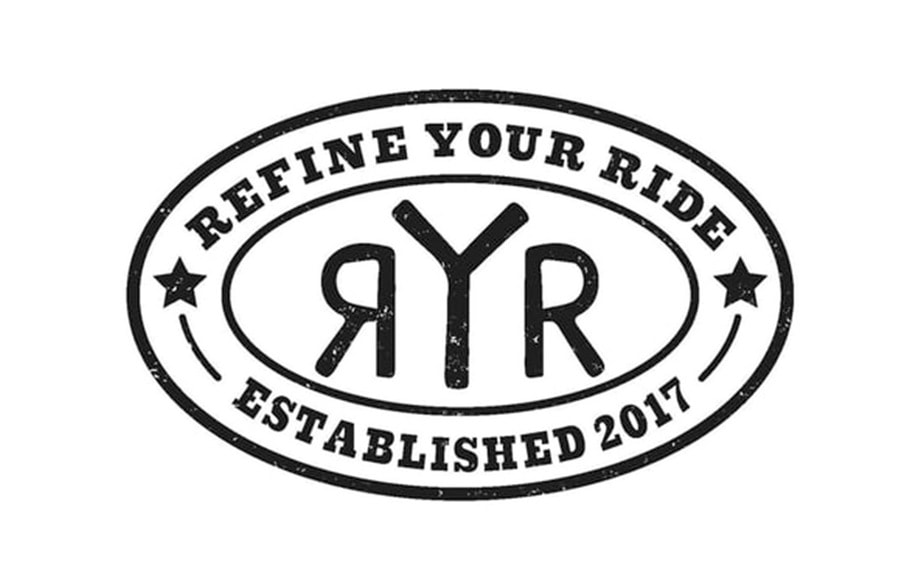

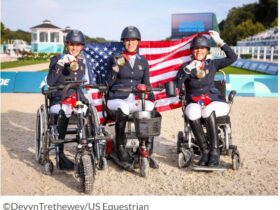
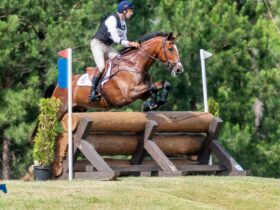

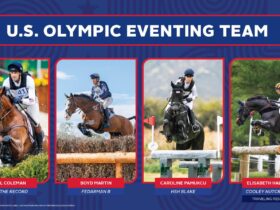


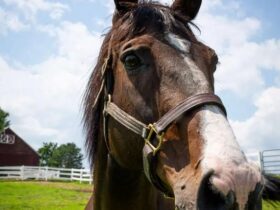
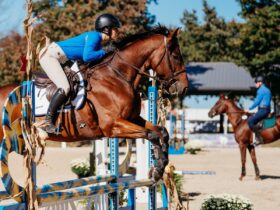


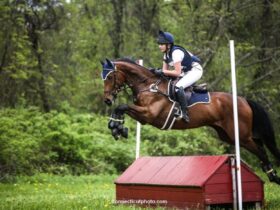


SOCIAL